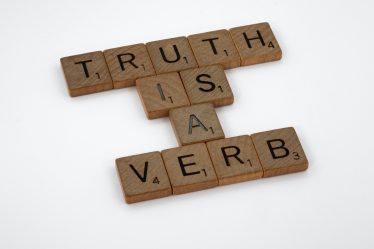
Let’s start with the basics: different text types, also called text types, are key to good communication. We often encounter texts of different forms and purposes in everyday life and work. Knowing these differences helps us to understand others better.
We will introduce the basic types of texts: fiction, non-fiction, spoken, written, formal and informal. Emphasis will be placed on distinguishing between them according to purpose, form, and target audience. We will also look at monologic and dialogic and subjective and objective texts. Finally, we briefly examine practical, communicative, administrative, journalistic, professional, and scientific texts.
We aim to learn to recognize these differences and use them to our advantage, whether writing or receiving a text. We will examine the characteristics of each type of text and provide a practical example for each type. Our teaching material will equip you with the knowledge to better understand and choose the type of text you need for your situation.
Fiction and non-fiction texts
There are two basic categories of text types, fiction, and non-fiction, which differ in purpose, structure, and content.
What is fiction, and what are its characteristics?
Fiction seeks to express ideas and emotions and create visual images through the rich use of language, often including symbols and metaphors. They are intended primarily for the reader’s aesthetic pleasure and emotional response. The structure of these texts is loose and often relies on literary techniques such as dialogue, monologue, and various literary figures. The content of fiction focuses on human experience, social criticism, or the exploration of imaginary worlds. For example, drama, novels, or poetry are fiction.
- Purpose: Expressing ideas, emotions and visual images through symbolic and metaphorical use of language.
- Structure: It can be more free-form, often relying on literary techniques such as dialogue, monologue, and literary figures.
- Content: Focused on human experience, social critique, or exploration of imaginary worlds.
Examples of fictions:
- Poetry
- Roman
- Drama
- Essay
What is a non-fiction text, and what are its characteristics?
Non-fiction texts aim to convey information, knowledge, or instructions clearly and precisely. These texts aim to inform, instruct, or report without using symbolic or metaphorical language. The structure of non-fiction texts is usually clearly defined, with separate paragraphs, subheadings, and a list of bullet points to help the reader follow the information. The content includes facts, data, and arguments supporting the central theme or thesis, allowing the reader to access the desired information without further interpretation. Examples of non-fiction texts include textbooks, journalistic articles, instruction manuals, and official documents.
- Purpose: To convey information, knowledge, or instructions in a clear and precise manner.
- Structure: Clearly defined, with separate paragraphs and subheadings for easy understanding.
- Content: Contains facts, figures, and arguments without the use of symbolic or metaphorical language.
Examples of non-fiction texts:
- Textbook
- Journalistic article
- Instructions for use (Instructions for use of the washing machine)
Comparison of fiction and non-fiction text
| Feature | Fiction texts | Artistic texts |
| Name | Emotional response, aesthetics | Informing, teaching |
| Structure | Free, metaphorical | Clear, organized |
| Content | Subjective, imaginary | Objective, factual |
| Examples | Poetry, novels, plays | Textbooks, articles, manuals |
Spoken and written texts
In the world of communication, we are constantly moving between spoken and written texts, which have specific characteristics and uses. Understanding these differences allows us to better adapt our messages to different situations and audiences.
What is spoken text, and what are its characteristics?
Spoken texts cover all communication that takes place orally. These can be everyday conversations, lectures, speeches, and presentations. A characteristic feature of spoken texts is their instantaneous nature, which allows them to respond immediately and to adapt according to the listener’s reaction. They often include elements of non-verbal communication, such as tone of voice, body language, and facial expressions, which can emphasize or complement what is being said. In spoken texts, it is also expected to make greater use of informal language and colloquial expressions.
- Purpose: They allow direct interaction and immediate response.
- Structure: Often flexible and spontaneous, depending on the situation and the listener’s response.
- Content: Use of colloquial language, may include informal expressions and slang.
- Additional elements: Tone of voice, body language, and facial expressions add an extra layer to the message.
- Examples: Everyday conversations, public speaking, interviews, lectures.
What is written text, and what are its characteristics?
Written texts comprise any communication recorded in writing, from articles, official documents, and books to emails and online publications. Their main characteristic is their durability, which allows the message to be carefully considered before it is published. The structure of written texts tends to be more formal and organized, with clearly separated paragraphs and subheadings to facilitate comprehension. Emphasis is placed on correct language, grammar, and spelling, as body language and tone of voice are not present to add context or emotional charge.
- Purpose: Serves as a permanently recorded message to inform, document or teach.
- Structure: More formal and organized, with clearly separated paragraphs and subheadings for ease of reading.
- Content: Emphasis on correct use of language, grammar and spelling.
- Additional elements: Option to include figures, graphs, and tables to supplement or clarify information.
- Examples: Books, newspaper articles, official documents, emails, weblogs.
Comparison of spoken and written text
| Characteristic | Spoken texts | Written texts |
| Name | Interaction, discussion | Information, documentation |
| Structure | Flexible, spontaneous | Organised, formal |
| Content | Spoken language, informal | Formal language, emphasis on accuracy |
| Examples | Speeches, conversations | Books, articles, official documents |
Have you had a chance to check out our study guide on idioms, expressions, euphemisms and parts of speech?
Monologic and dialogic texts
When exploring modes of communication, we come across monologic and dialogic texts. These two types differ according to the sender and receiver interaction.
Monologic texts and their characteristics
Monospeech texts involve communication where the communicator does not expect a direct response from the recipient. These are texts such as public speeches, lectures, and written documents conveying information, knowledge, or instructions without immediate feedback. Examples of monologic texts are articles, essays and official reports.
- Purpose: To provide information without expecting a response.
- Structure: Organised, with an emphasis on clarity.
- Content: Objective, with the possibility of professional terms.
- Addenda: Visual elements for clarification.
- Examples: Lectures, articles, official reports.
Dialogic texts and their characteristics
On the contrary, dialogic texts involve an active interaction between the communicator and the recipient. Such communication is characteristic of conversations, debates, and interviews, where both parties exchange information and opinions. This type of text allows for direct responses, questions, and discussion, leading to a more dynamic and interactive exchange of messages. Examples of dialogic texts are dialogues, email correspondence, and social networks.
- Purpose: To encourage interaction and exchange of views.
- Structure: Adaptable to current dynamics.
- Content: Everyday language, adapted to the relationship between the interlocutors.
- Add-ons: Influence of non-verbal communication.
- Examples: Conversations, interviews, emails.
Subjective and objective texts
There is also a distinction between subjective and objective texts, which represent two different approaches to formulating and interpreting messages. The distinction between the two is based on the presence of the author’s personal opinion or impartiality.
The meaning of subjectivity in texts
Subjective texts contain the author’s personal views, opinions, and feelings. In these texts, the author expresses their thoughts and feelings, which gives the text a personal touch. Subjectivity is often present in literary works, diaries, blogs and columns where authors share their experiences, thoughts and criticisms.
- Features: Personal views, opinions and feelings of the author.
- Impact: They add a personal touch to the text.
- Use: Literary works, diaries, blogs, columns.
- Purpose: Sharing experiences, reflections, critiques.
The importance of objectivity in texts
On the contrary, objective texts strive for an unbiased presentation of facts and information. The author avoids personal opinions to ensure the accuracy and credibility of the information provided. Objectivity is crucial in scientific articles, journalistic reports, and official documents, where information must be verifiable and reliable without the author’s personal influence.
- Characteristics: Unbiased presentation of facts and information.
- Influence: Ensure accuracy and credibility.
- Use: Scientific articles, journalistic reports, official documents.
- Purpose: Presentation of verifiable and reliable information.
Formal and informal texts
A distinction is made between formal and informal texts, which are distinguished according to the context of use, formality of language and the purpose of the message.
Language and style in formal texts
formal texts are characterized by formal language and strict structure. They are used in business, official communication, and academic writing. They are also characterized by formal greetings, clearly defined phrases, and the absence of slang and colloquial expressions. They often include specific terminology relevant to a particular professional field. Examples of formal texts are contracts, legal acts, business reports, and official letters.
- Features: Formal language, strict structure.
- Use: Business world, official communication, academic writing.
- Elements: Formal greetings, specific terminology, absence of slang.
- Examples: Contracts, legal acts, business reports, formal letters.
Language and style in informal texts
Informal texts are characterized by less formal language and a more flexible structure. They are characterized by the use of everyday language, slang and personal expressions, reflecting the individuality of the author. Informal texts include personal correspondence, daily workplace communications, blogs, and social networks. They often aim to exchange information relaxed and directly, including through emails, SMS, and notes.
- Features: Less formal language, flexible structure.
- Use: Personal correspondence, workplace, blogs, social networks.
- Elements: Everyday language, slang, personal expressions.
- Examples: Email messages, SMS, notes.
Improving your essay writing starts with understanding its structure; our guide on how to write an essay and the use of stylistic devices can elevate your writing from good to great.
Practical communicative, administrative, professional, journalistic texts
Understanding different types of texts helps us to communicate effectively in different situations. They can be divided into practical, formal, professional, and journalistic texts, each with its characteristics and purposes.
Practical communicative texts are part of everyday life, used at home or among acquaintances to communicate everyday things. They are subjective and informal, mostly spoken and often dialogic-speaking, allowing interaction between interlocutors.
Administrative texts are those where the communicator and the addressee are not in an equal position, for example, in a communication between an official and a client. These texts are usually objective and may be written or spoken, but are predominantly two-speakers due to the nature of the communication. The topic of the communication is explicitly stated and specific.
Journalistic texts are intended for the general public and are published in the mass media. They understandably address general topics, addressing a mass audience with diverse interests. These texts are mostly subjective and usually monologic, representing the author’s point of view or account of events.
Professional texts are considered within a specific field of expertise and are aimed at a narrow audience with specific professional interests. They contain specific terminology and are intended for the exchange of expert information. The author does not reveal themself in these texts, so they are objective and mostly mono-speaking.
In addition to these, there are scientific texts, which are aimed at a particular group of experts, researchers, and theoreticians, and peer-reviewed texts, which present technical topics in an understandable way to a wide range of people without special knowledge. Popular science texts include handbooks, popular science journals, and the like.
Different text types in a summary
We have explored a number of text types and their different purposes, functions, and characteristics. We have answered questions about distinguishing between fiction and nonfiction, spoken and written, monologic and dialogic, and subjective and objective texts. We have also looked at the differences between formal and informal texts and how language and style adapt according to the context of communication.
It is vital to get the approach right when learning. An instructor or private teacher who understands and uses different types of texts can give their students a deeper understanding of the material. Instruction and lessons that include the personalized use of texts can significantly improve students’ knowledge and ability to put what they learn into practice.
If you’re seeking a tutor to help you master literary genres, a quick search for “writing tutor London” or “tutoring London” on platforms like meet’n’learn can connect you with the ideal private teacher.
In the hope that you have found useful information for your needs, we invite you to continue exploring text types and communication. Always keep your communication clear, effective, and tailored to the situation – with a little help and guidance from your trainer or private tutor, you are on the right path to success.
Text Types: Frequently Asked Questions
1. What is a formal text?
A formal text is usually written in business, official communication, and academic writing. It is characterized by its formal language and strict structure.
2. List some examples of fictions
Examples of fiction are literary works such as novels, poetry, and plays that express the author’s feelings and ideas.
3. How are spoken and written texts different?
Spoken texts are direct and include elements of non-verbal communication, while written texts are permanent and allow careful thought about the message.
4. What is a two-speech text?
Two-way text involves interaction between two or more participants exchanging information and opinions.
5. What is the purpose of objective texts?
Objective texts present facts and information unbiased and accurately without involving the author’s opinion.
6. Why are subjective texts important?
Subjective texts are important because they allow the author to express their feelings, opinions, and experiences, giving readers a deeper insight into the subject.
7. What do practical-understanding texts include?
Practical-comprehension texts include everyday communication between acquaintances and family, such as emails, texts, and notes that communicate everyday things.
8. Where do we find journalistic texts?
Publicity texts are found in mass media such as newspapers, magazines, and websites, where news, articles, and commentaries on current events are published.
Whether crafting a personal story or an academic piece, our narrative essay writing tips and advice on interpretive essay writing can guide you in conveying your ideas.
References:
1. Helpful Professor
2. Literacy Ideas
3. Wikipedia



